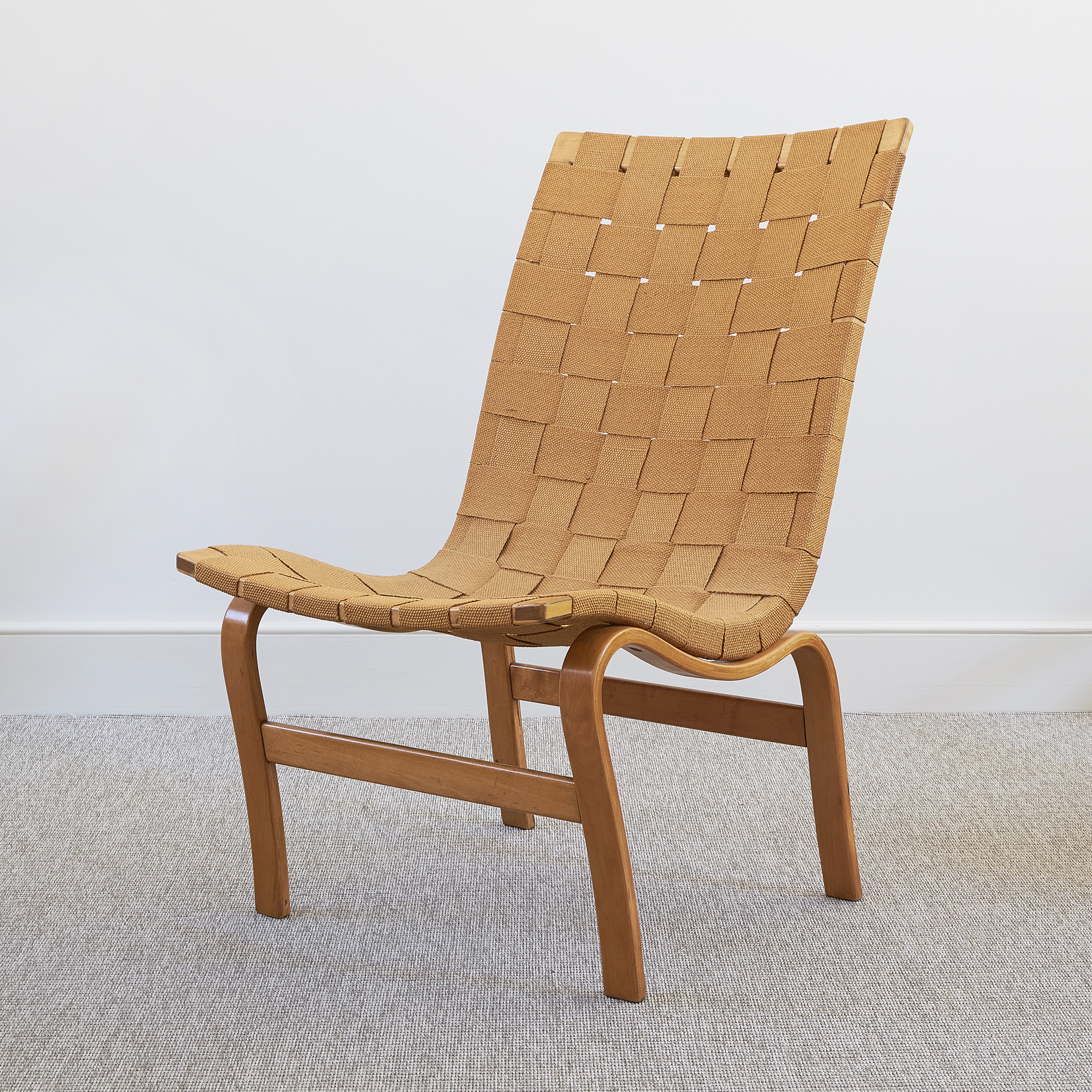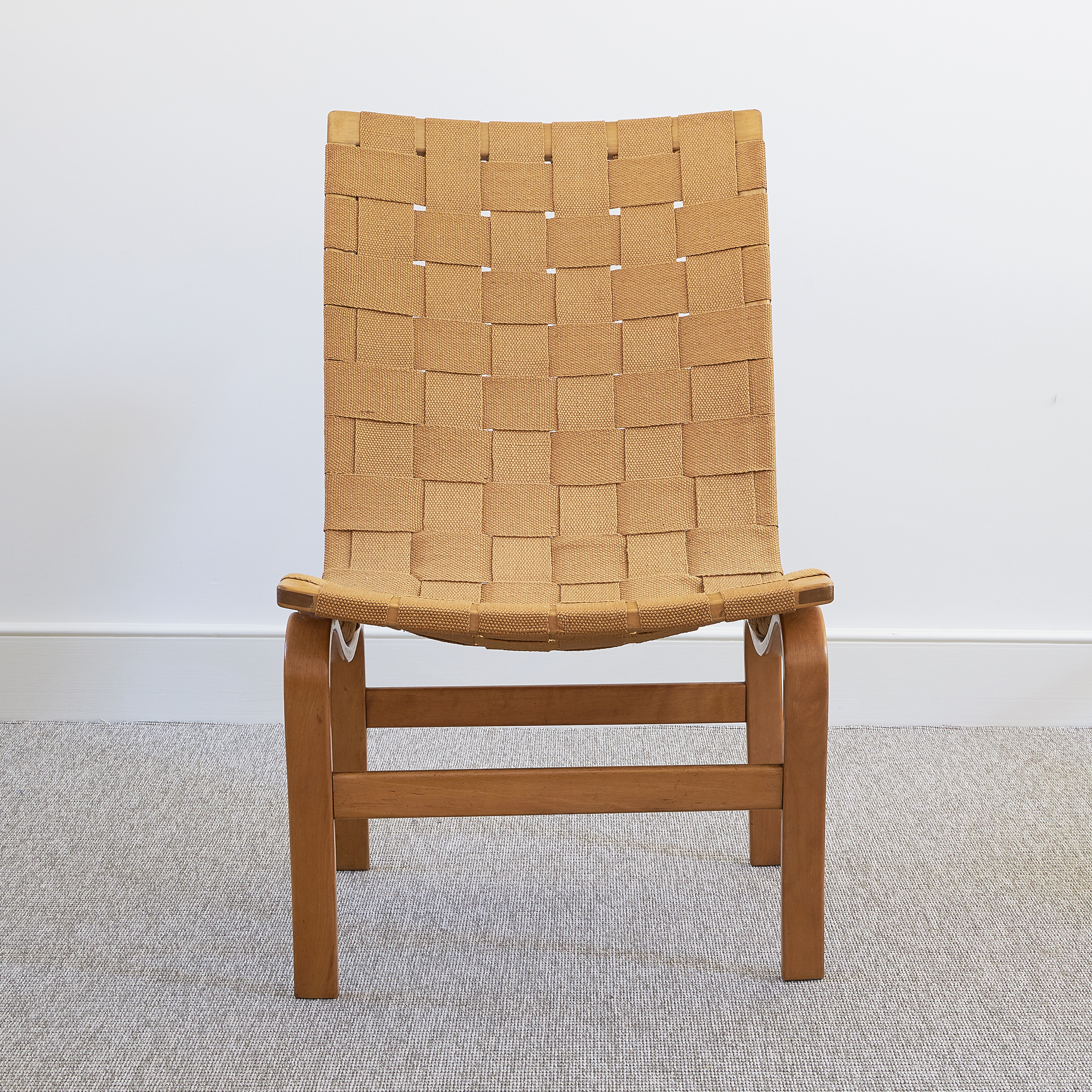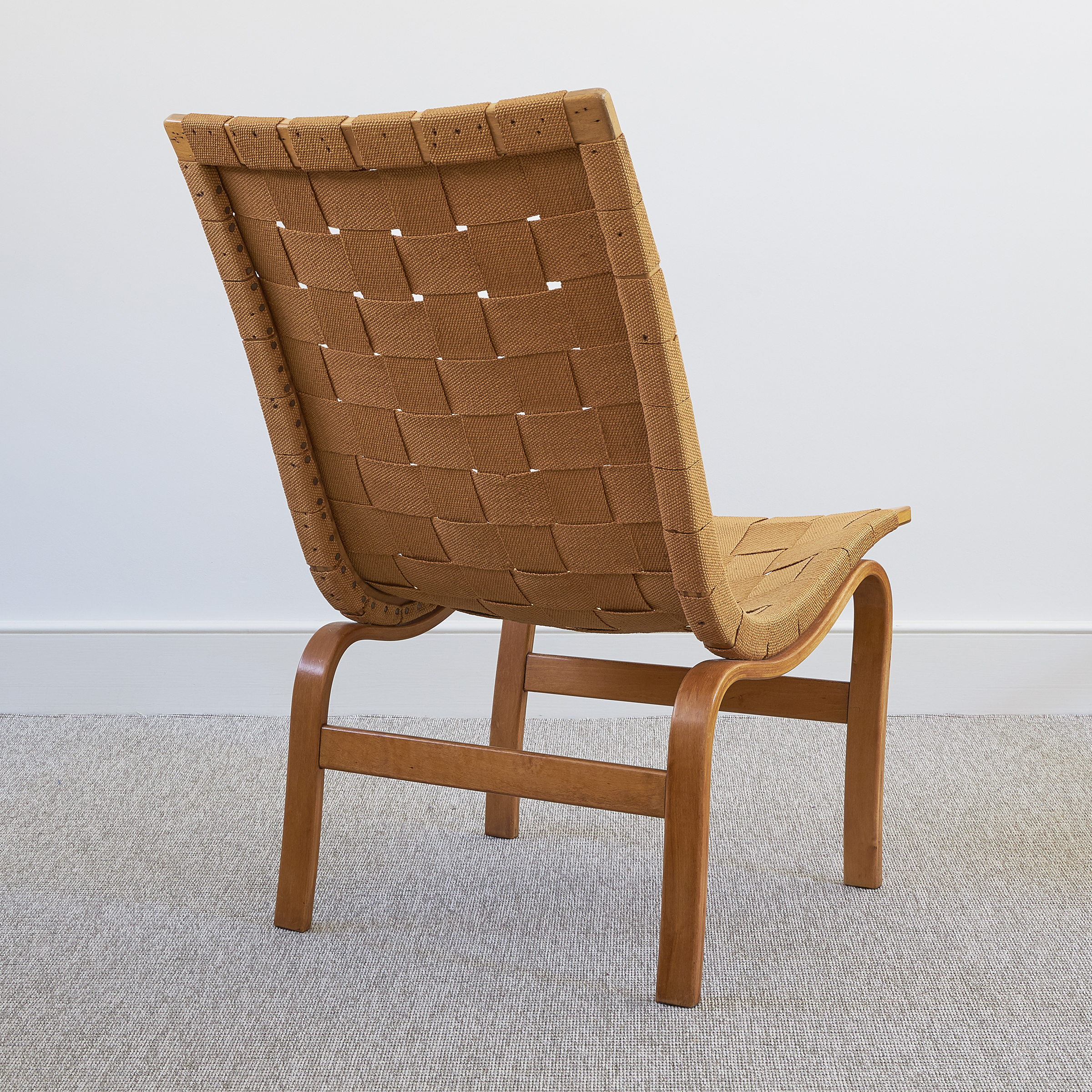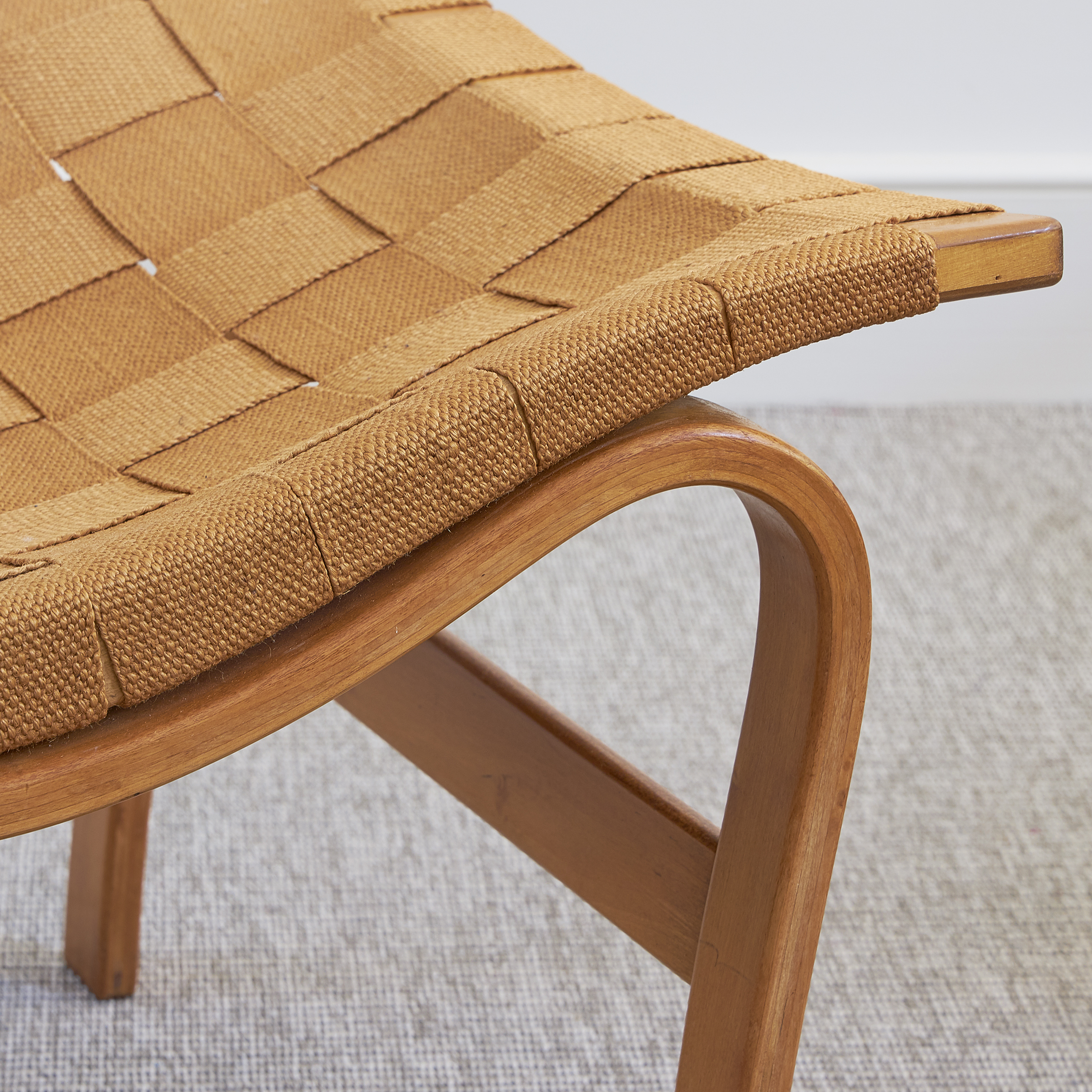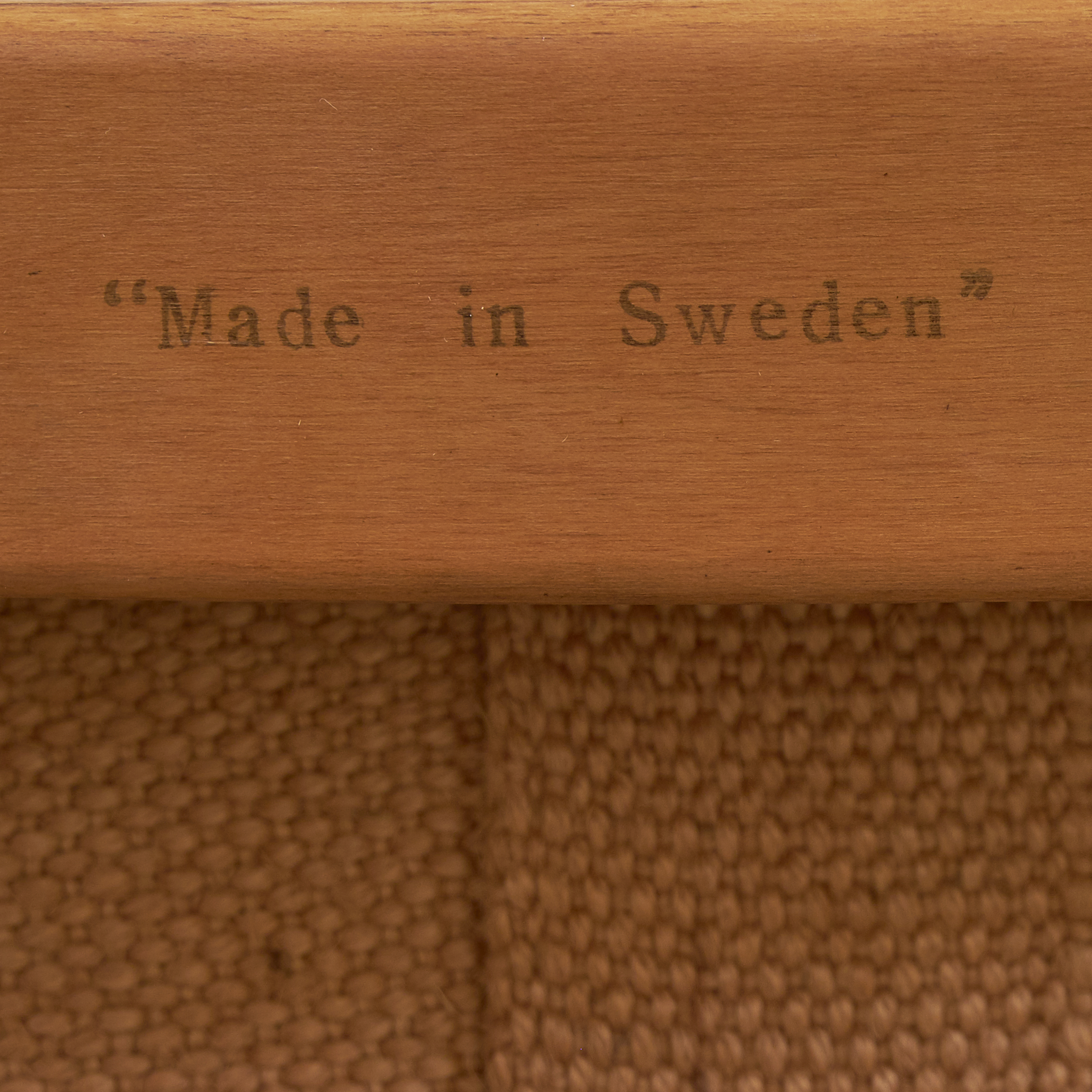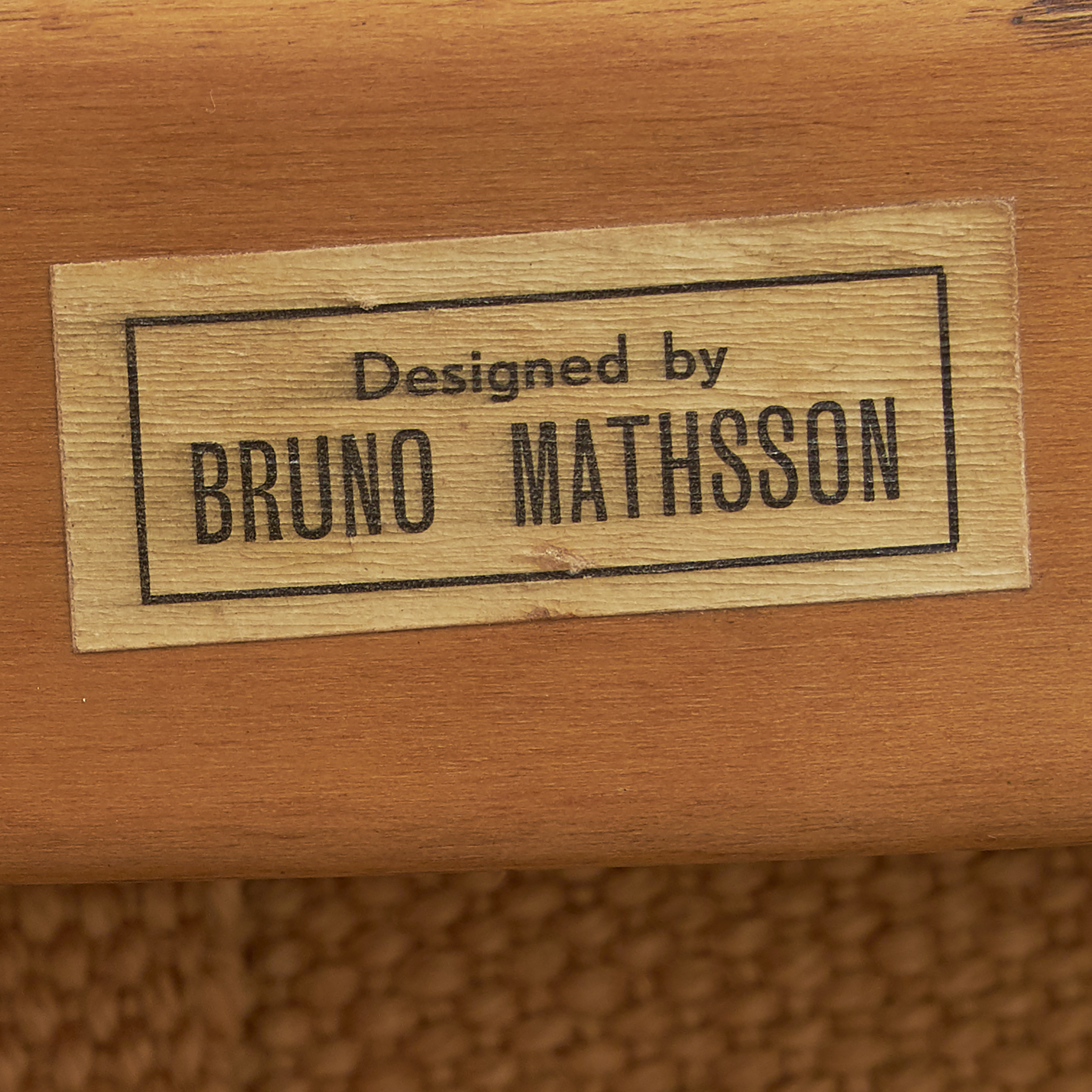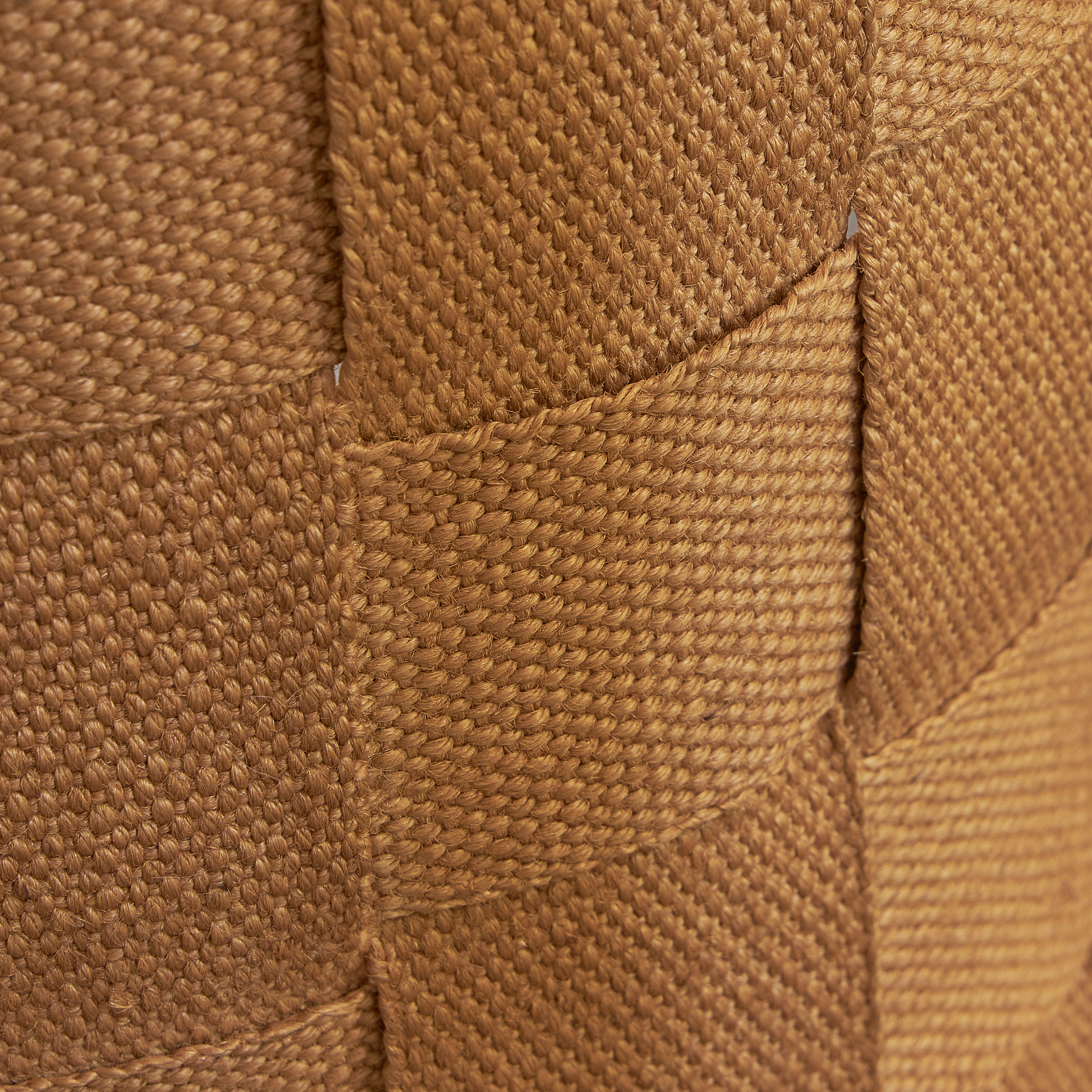More about this product
The frame with label ‘Designed by Bruno Mathsson’ and stamped “Made in Sweden”. The hemp webbing seems to be original, with visible fading seen at intersections. The seat is 35cm high.
Like the Finnish designer Alvar Aalto, Bruno Mathsson was one of the first Scandinavians to embrace undulating, biomorphic forms in furniture. His early pieces such as the ‘Eva’ and ‘Pernilla’ series of chairs incorporate dramatically flowing, bent beechwood frames, making them some of the most instantly recognisable works of 20th Century design. Mathsson was also a pioneer of ergonomics: he is said to have based the contours of his chairs on the impression his body made when he sat on a bank of snow, and used supple, accommodating, woven webbing for seats. His concern for practicality is shown by pieces such as the “Maria” table. An elegant design with gate legs and hinged leaves, the table measures more than nine feet long when fully extended, but folds down to just nine inches in thickness.
From the mid-1940s through the 1950s, Mathsson focused on architecture, designing and building houses with insulated, triple-glazed window walls and heated floors, a type of construction that flew in the face of traditional wood-clad Swedish residential design, and consequently met with some scepticism. He returned to furniture in the 1960s, employing an entirely new suite of materials: stainless-steel framing and mesh seats feature in pieces like the ‘Jetson’ chair; with the mathematician Piet Hein, Mathsson designed the ‘Super-Elliptical’ table, which has a laminate top and four-part tubular steel legs that sprout like flower stems from a single base. Bruno Mathsson’s stylistic flexibility as a designer, made him a creator whose pieces meet all tastes and needs.


